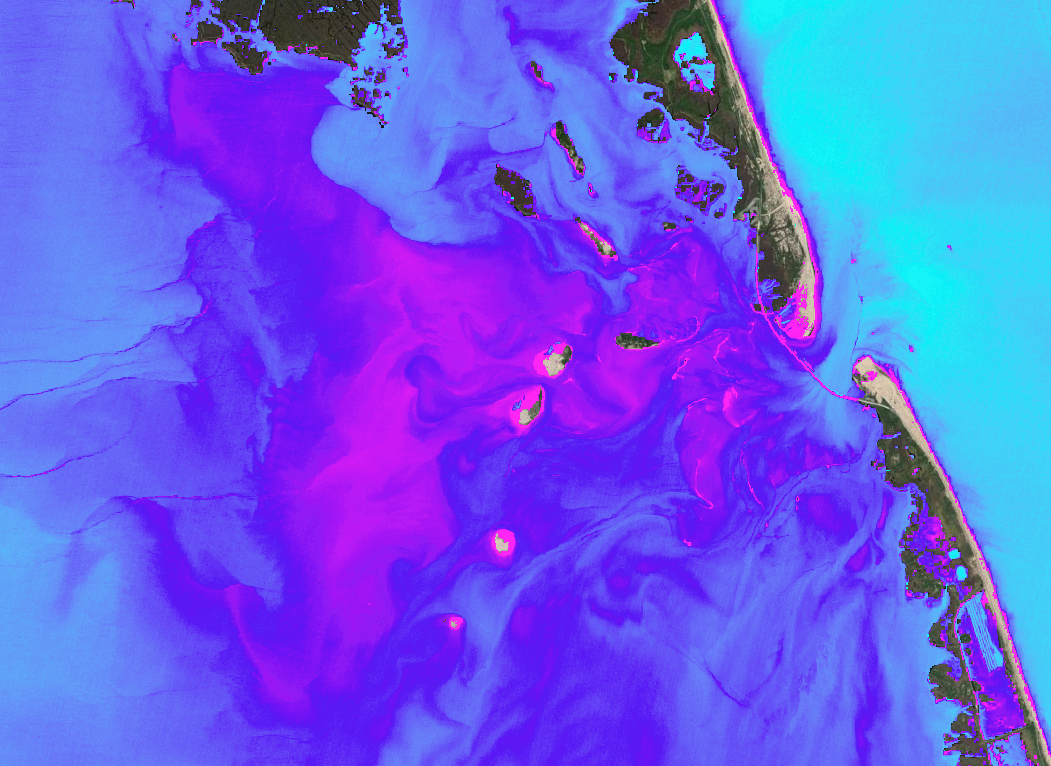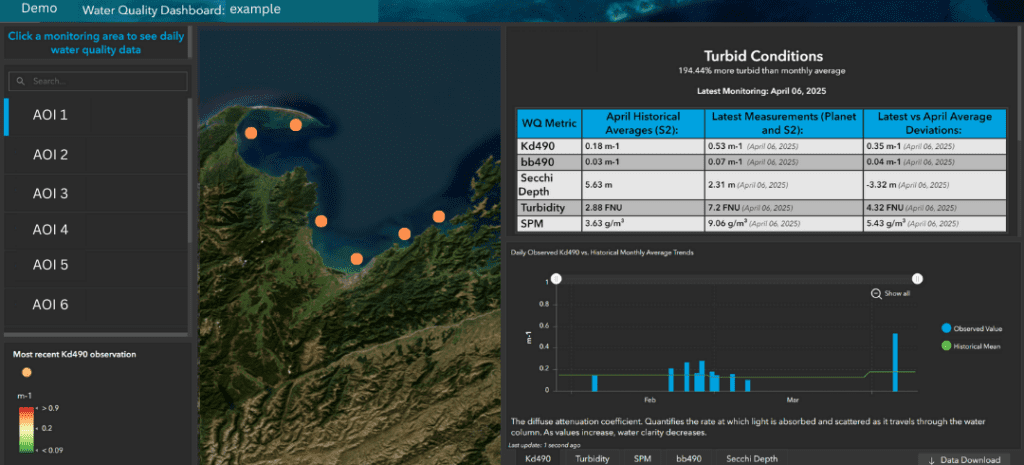
Satellite-Derived Water Quality
TCarta’s Water Quality Monitoring service delivers near real-time and historical insights into water clarity using satellite imagery from Sentinel-2 and PlanetScope. This service is optimal for supporting airborne LiDAR bathymetry surveys, helping identify the clearest collection windows, detect turbidity plumes, and assess environmental conditions that directly impact laser performance. By analyzing key parameters, survey teams can reduce risk, improve data quality, and make informed decisions from planning through to reporting.

Key parameters analyzed through satellite-based methods include:
- Kd490: The diffuse attenuation coefficient at 490nm (blue/green). Quantifies the rate at which blue/green light is absorbed and scattered as it travels through the water column.
- bb490: The backscattering coefficient at 490nm. Indicates the amount of blue/green light scattered back towards the sensor by particles and other constituents in the water column.
- bbp533: Particulate backscattering coefficient at 533nm. Indicates the amount of green light scattered back toward the sensor by particles. A good proxy for LiDAR laser penetration.
- Secchi Depth: An indication of how deep light can penetrate into the water column using a simulated Secchi disk.
- SPM: An estimate of the amount of suspended particulate matter in the water column.
- Turbidity: The amount of scattered light proportional to the concentration of particles in the water. Sensitive to particle size, shape, composition, density, and color

Clients receive access to a customizable, dynamic web dashboard featuring downloadable reports, time series graphs, and historical comparisons tailored to their area of interest. In addition to LiDAR planning, this service supports broader applications such as harmful algal bloom detection, aquaculture operations, marine construction, and environmental monitoring. Read more about our recent work in Florida’s coastal mapping efforts.
WHY MONITOR WATER CLARITY?
Clarity monitoring gauges cloudiness or haziness – also referred to as turbidity – in an aquatic environment. A high concentration of suspended sediment reduces light penetration within a water column, which in turn decreases the sunlight available for benthic photosynthesis. Plus, sediment plumes can indicate excess nitrogen or phosphorus from nearby land. This information can be mission critical for planning a successful LiDAR survey.

